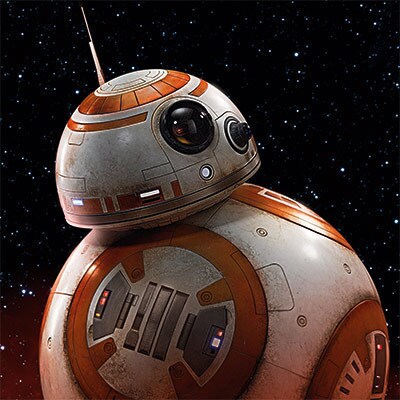While the lovable camera droid RX-91L has become a regular staple on the LIVE! Stage at Star Wars Celebration, this year’s event in Japan marks the debut of a brand-new character made by the same droid builders group. COO-K1 – known affectionately as “Cooki” – is appearing for the first time on LIVE! Stage at Star Wars Celebration Japan.
Sporting no less than six individual arms and standing nearly seven feet tall, we first met the COO-series cook droid in Star Wars: Attack of the Clones when Anakin Skywalker (Hayden Christensen) and Padmé Amidala (Natalie Portman) travel in secret aboard a refugee ship from Coruscant to Naboo. More recently, another appeared among the denizens of Jabba’s palace in The Book of Boba Fett. The latter had been constructed as an elaborate practical puppet on set, and for this Celebration, the droid builders took on a new assignment: build a cook droid that can be operated remotely.
Roughly a year before Star Wars Celebration Japan, Lucasfilm approached the group that had made RX-91L about a new addition to the LIVE! Stage crew. The droid builders pitched a number of concepts, and Cooki was ultimately chosen. The building team included David Ferreira, Chris Stroud, Trevor Zaharichuk, Matt Hobbs, Patrick Gray, Luke Daley, Psy DeLacy, Seth Kelly, and Neil Hutchison.
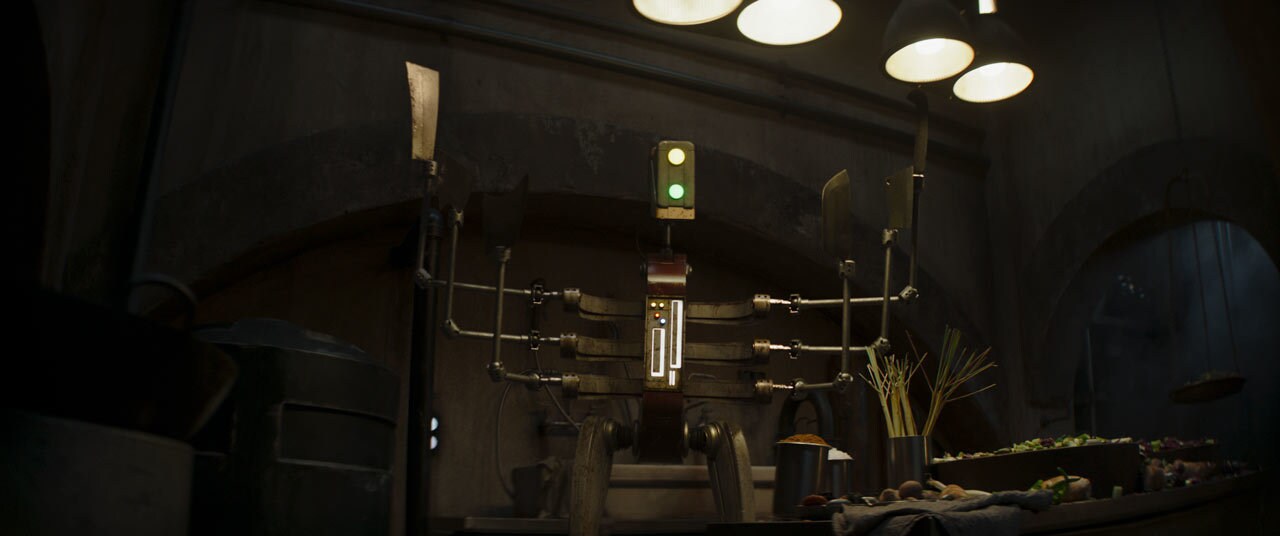
“We asked for reference material from the original Book of Boba Fett droid so that we could accurately recreate it,” Ferreira tells StarWars.com. “He’s about six-and-a-half or seven feet tall. He’s a beast. We knew we wanted him to look around with head movement, and we wanted the arm appendages to move around in tandem. We experimented with how the body torso could move as well. So we have a blend of those three elements. He can be really dynamic and fluid in his movements.”
With a background in visual effects and animation, Psy DeLacy created early digital tests for Cooki, rigging and animating a computer model to help determine the character’s performance traits. “We knew early on that six arms were going to have a lot of potential for multiple collisions,” DeLacy notes, “so to counteract that, we discussed the idea of having the upper arms generally be behind his back, and only be used sparingly. This led to the idea of a sort-of-cranky line cook who every so often would just throw his hands up in exasperation, which was great by itself, but then the droid started taking shape and truly came to life.”
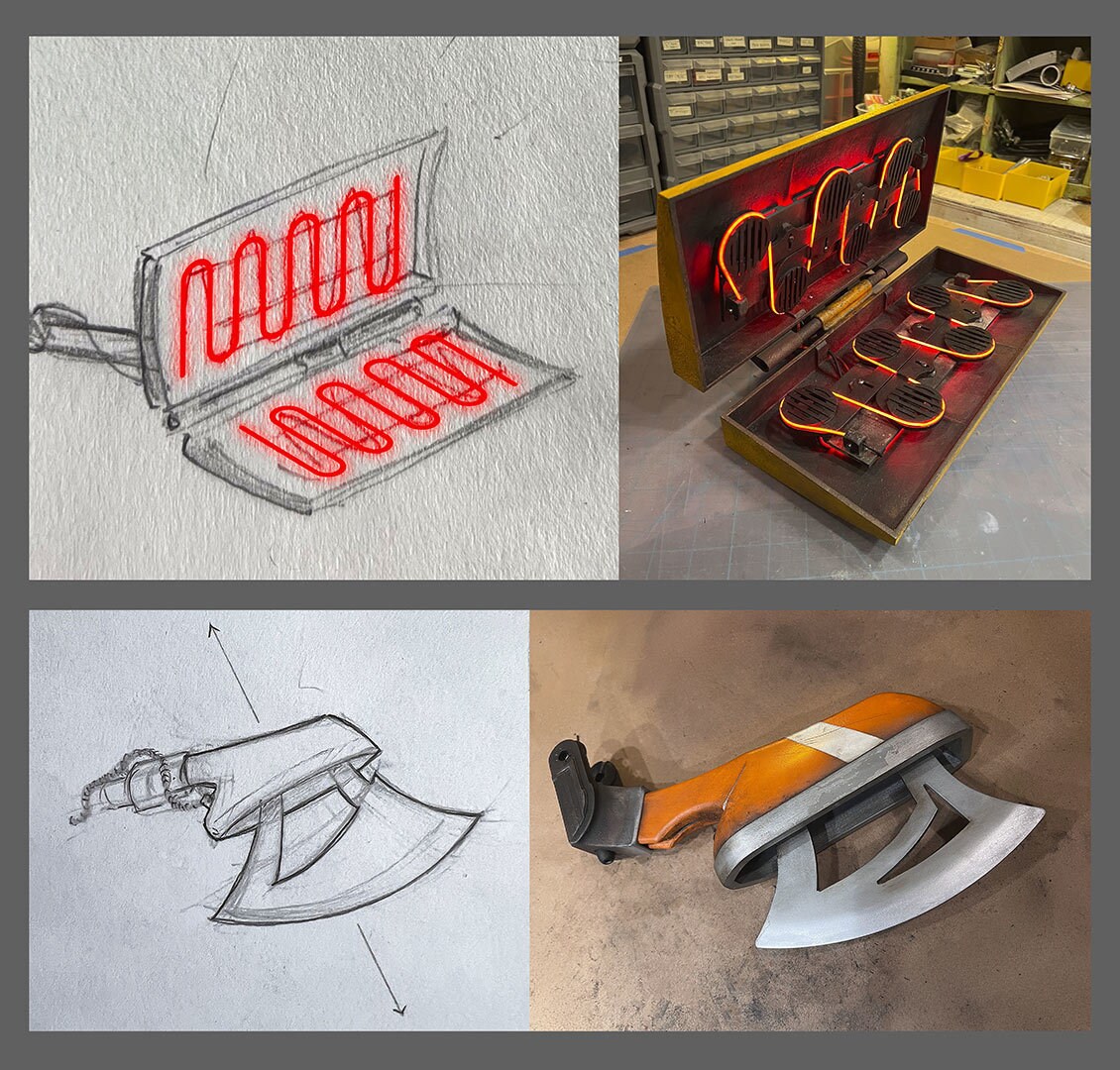
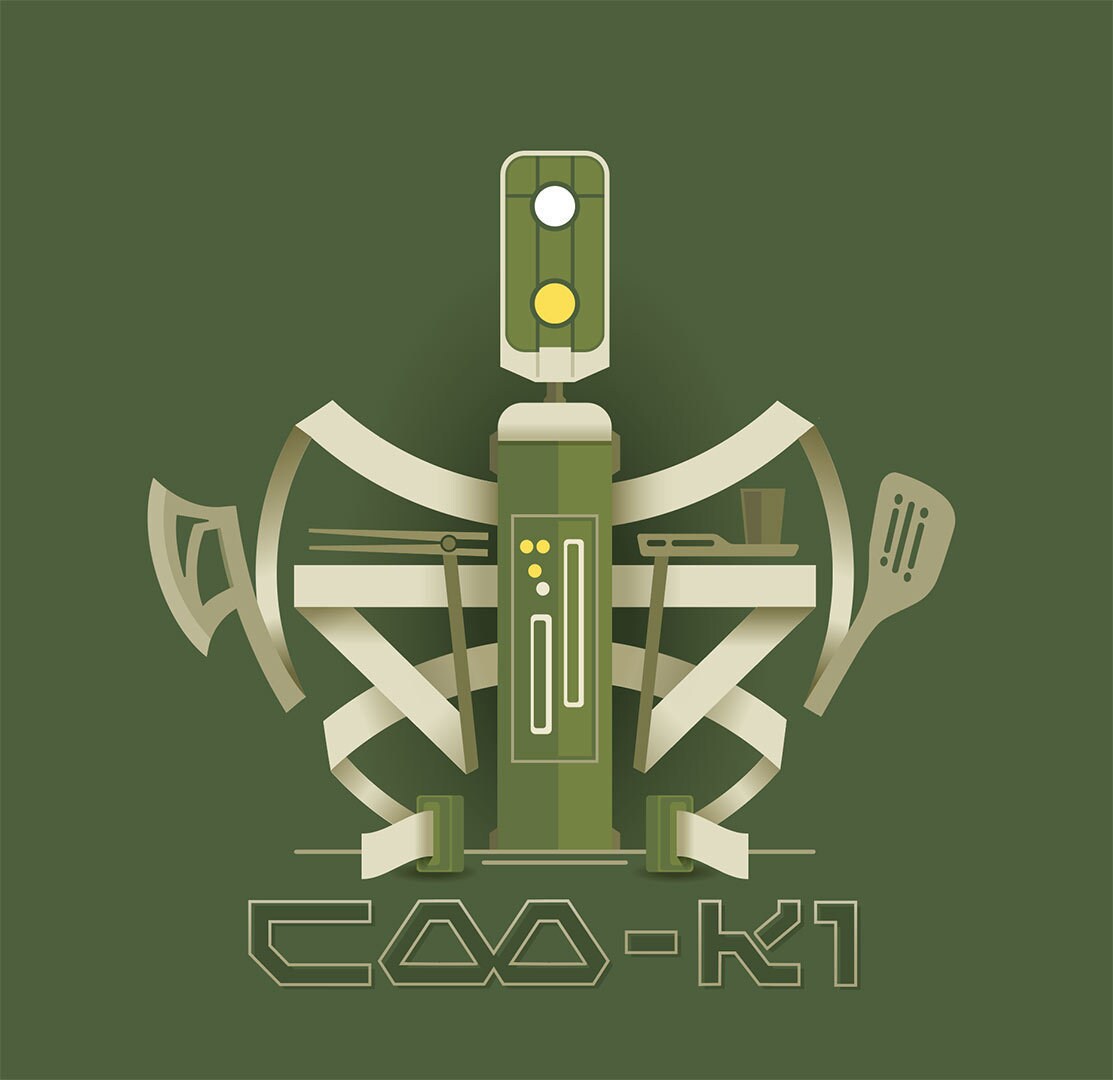
Seth Kelly also assisted with concept development and design, including the refinement of Cooki’s paint scheme and weathering, detailing to the body panels, and assembly methods for the various 3D-printed components. “I love how imposing he can be,” says Kelly, a graphic designer by trade. “He’s the most unapologetically robotic droid I’ve ever worked on and I love that aspect of him.” In addition to consulting on the overall design, electrical engineer Matt Hobbs also provided assistance with 3D-printing as well as painting and weathering. “I love that this droid is a huge challenge and has really pushed David and Chris to learn so many new skill sets,” Hobbs adds.
“The motion table and the head are a real show-stopper,” notes Luke Daley, a United Kingdom-based engineer who provided help with Cooki’s leg design, among other details. “Mechanically speaking, as well as systemically and programmatically, it's such a technological achievement for a build of this kind that it's really going to be the mostly-hidden star of the show!”
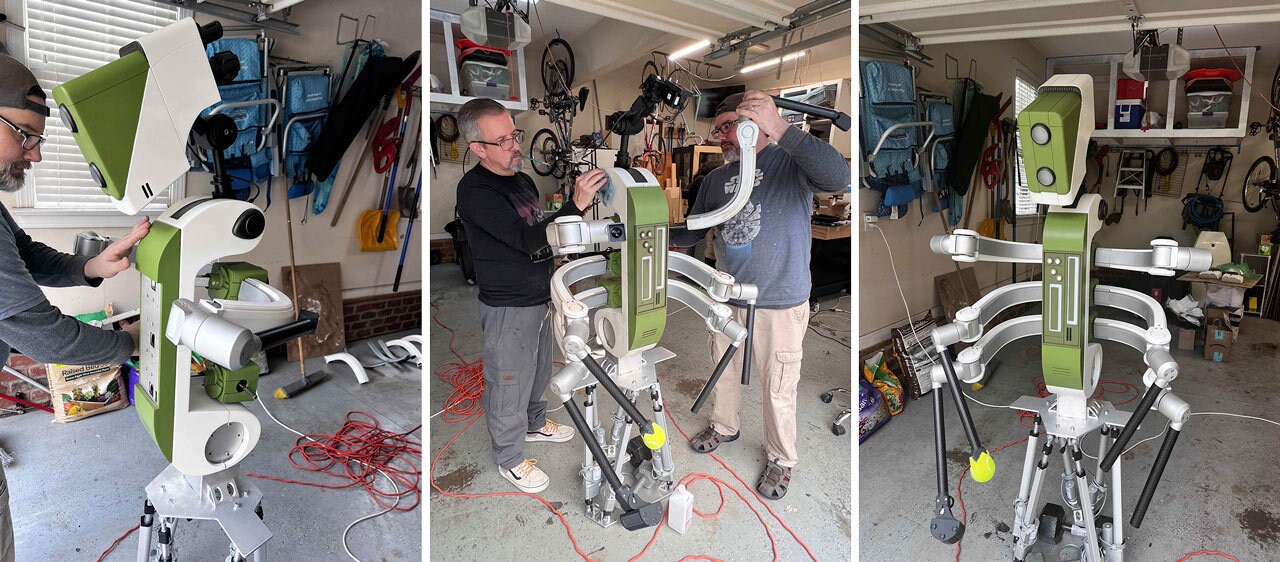
Based in Canada, Trevor Zaharichuk worked with Chris Stroud on the electrical side, primarily working on the lighting and control systems boards. “This droid requires more complexity than others because there are so many motors and so many features,” Zaharichuk explains. “We have to throw in a fair bit of hardware control to be able to communicate between these different features. How to do that in a timely fashion has been one of the real challenges on the project. The real-time aspect is key. We have around 36 or 37 motors. I designed the controllers for the radio receivers. It’s sort of making the brains of it. Chris does the heavy lifting of making the software that runs on those brains.”

Stroud describes the process of designing and building Cooki as a “quest,” noting that Ferreira “has had the task of figuring out how we can actually fit motors inside and make it able to perform onstage. The version in the show was mostly a rod puppet to move the arms.” Ferreira adds, “We’re treating this almost like an attraction. It’s the first droid we’ve done that doesn’t roam around. It just sits, articulates, and does its thing. We took inspiration from Dok-Ondar at Star Wars: Galaxy’s Edge, which is a beautiful animatronic. We’ve worked on how Cooki can interact with his own space, like cleaning the countertops, or nuances like that.”
Firmware engineer Neil Hutchison joined Stroud to help complete the droid, which he describes as the most complex project he’s been involved with. Part way through their efforts, they decided to change the style of Cooki’s motor control to help maintain smoothness in the droid’s arm movements. “Being able to change direction and find solutions to complex problems is something that Chris and I do well together,” Hutchison adds. “We both think very similarly and approach problems in the same way. It certainly makes the hard days easier!”
As Cooki makes his arrival in Japan, that means another remarkable project delivery for this distinct crew of droid builders working in collaboration between multiple countries. “Each member of the team is individually talented and capable, but seeing what is accomplished when we all come together has been a truly great experience,” notes Kelly.
“Anyone who says magic isn’t real has never witnessed the joy that droids bring to people,” DeLacy concludes. “Kids and adults grinning from ear to ear, completely awestruck as their favorite character from a galaxy far, far away is suddenly right there in front of them. I’ve seen adults turn back into children again. As operators, we try to stay hidden and preserve the magic, but when it is the kind of event where it is okay to do so, I’ll tell folks who ask me all about being a droid builder. ‘Star Wars is real,’ one of the kids that I was talking to exclaimed, ‘and I can be a part of it!’ And that is why we do this.”





